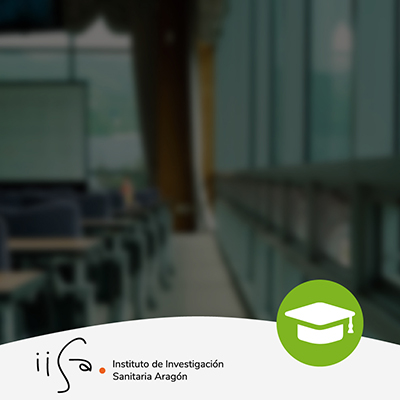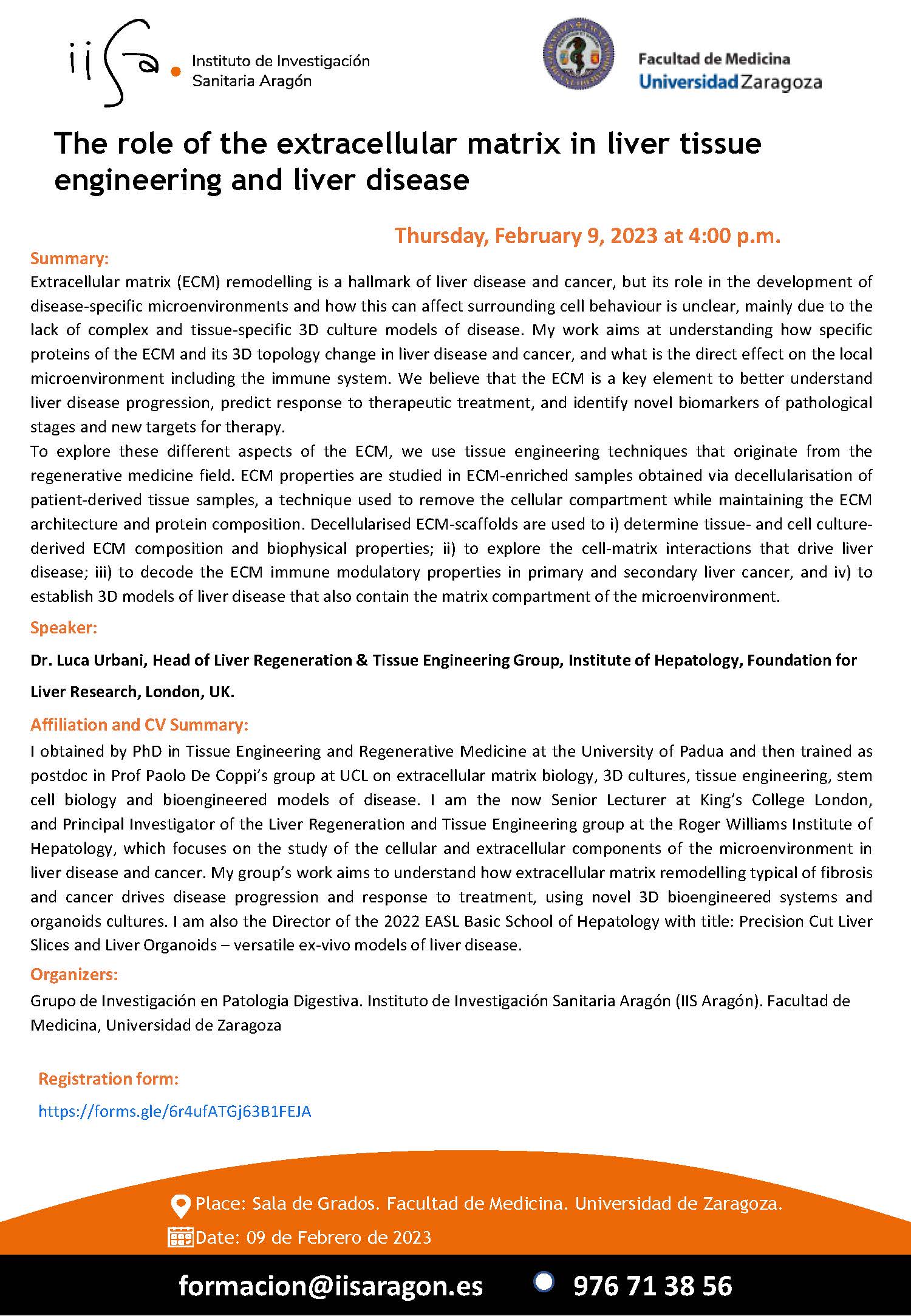Seminario BIOMÉDICO «Therole oftheextracellularmatrixin livertissueengineeringand liverdisease»

- Este evento ha pasado.
Seminario BIOMÉDICO «Therole oftheextracellularmatrixin livertissueengineeringand liverdisease»
9 febrero, 2023 @ 4:00 pm - 6:00 pm

Extracellular matrix (ECM) remodelling is a hallmark of liver disease and cancer, but its role in the development of disease-specific microenvironments and how this can affect surrounding cell behaviour is unclear, mainly due to the lack of complex and tissue-specific 3D culture models of disease. My work aims at understanding how specific proteins of the ECM and its 3D topology change in liver disease and cancer, and what is the direct effect on the local microenvironment including the immune system. We believe that the ECM is a key element to better understand liver disease progression, predict response to therapeutic treatment, and identify novel biomarkers of pathological stages and new targets for therapy.
To explore these different aspects of the ECM, we use tissue engineering techniques that originate from the regenerative medicine field. ECM properties are studied in ECM-enriched samples obtained via decellularisation of patient-derived tissue samples, a technique used to remove the cellular compartment while maintaining the ECM architecture and protein composition. Decellularised ECM-scaffolds are used to i) determine tissue- and cell culture-derived ECM composition and biophysical properties; ii) to explore the cell-matrix interactions that drive liver disease; iii) to decode the ECM immune modulatory properties in primary and secondary liver cancer, and iv) to establish 3D models of liver disease that also contain the matrix compartment of the microenvironment.

Organizers: Grupo de Investigación en Patología Digestiva. Instituto de Investigación Sanitaria Aragón (IIS Aragón). Facultad de Medicina, Universidad de Zaragoza
